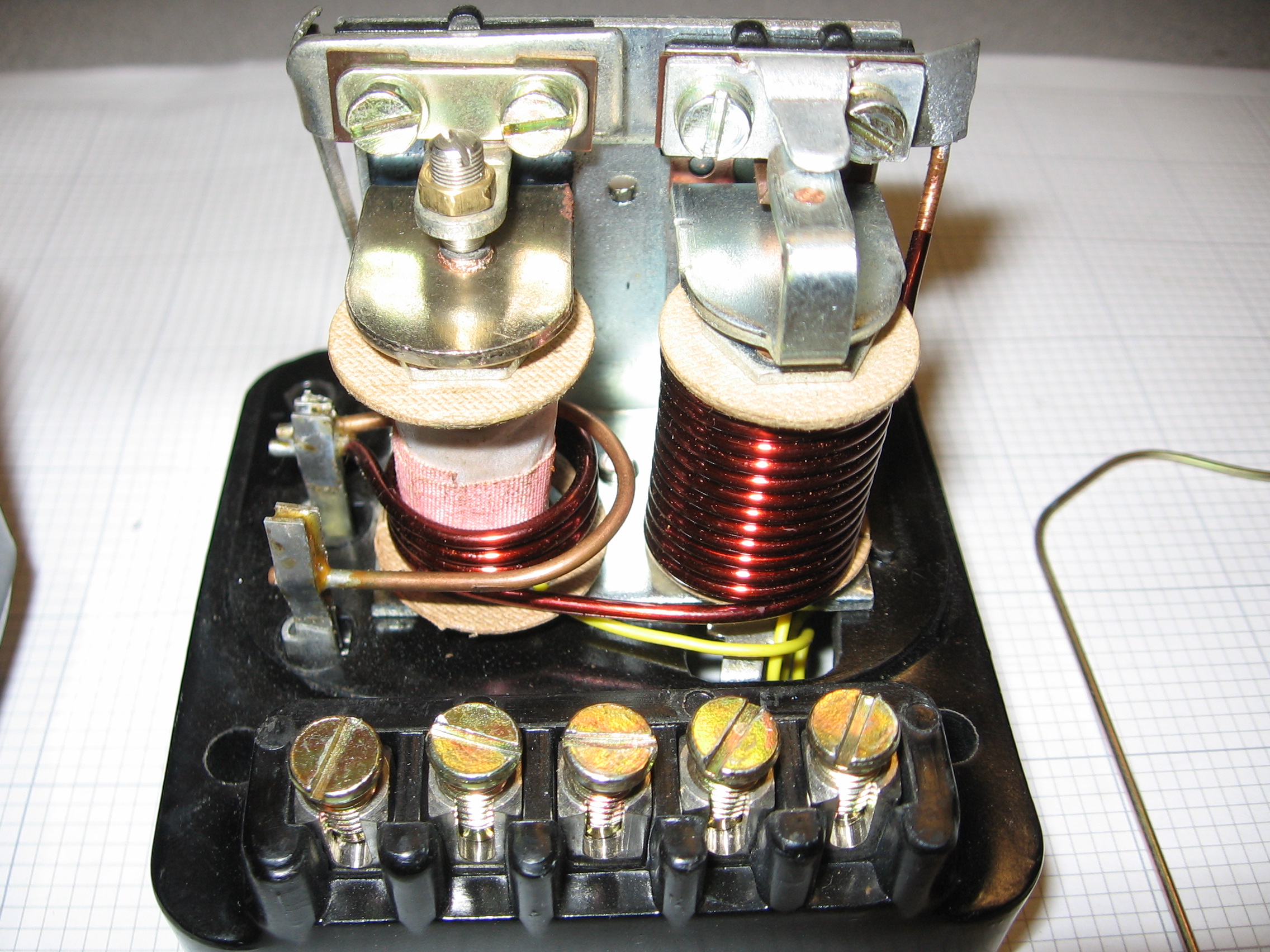Let’s talk about some other electrical topics this time. Well, actually I’ll talk and you can listen! I pretty much beat the generator subject to death last time, so I will move on to the voltage regulator control box. The repair manual would lead you to believe that these units are adjustable, but that is just a myth. You can tweak the little screws for hours, and never get things right. But if it isn’t working you have nothing (much) to lose by looking a little closer. If the battery is not charging and the generator checks okay (see last months article), the regulator may be suspect.
 Before getting too carried away, put the battery on a charger and see if it will take a charge. The state of charge can be checked with a hydrometer. Keep one of these in your tool box. The number of balls that float when the dropper is filled with fluid from the battery will indicate the state of charge. Be sure to rinse the tool thoroughly when finished, as battery acid will make short work of your Levis. Batteries do not like to be discharged, and most will not survive a full discharge more than once. Likewise, old batteries that have been allowed to go dead will rarely take a charge.
Before getting too carried away, put the battery on a charger and see if it will take a charge. The state of charge can be checked with a hydrometer. Keep one of these in your tool box. The number of balls that float when the dropper is filled with fluid from the battery will indicate the state of charge. Be sure to rinse the tool thoroughly when finished, as battery acid will make short work of your Levis. Batteries do not like to be discharged, and most will not survive a full discharge more than once. Likewise, old batteries that have been allowed to go dead will rarely take a charge.
 Check the voltage of the charged battery…it should be about 12.5 volts. Once you have a fully charged battery installed in the car, start the engine and observe the voltage at the regulator “A” terminal. The reading should be about 13.5 volts at fast idle. An amp meter or volt meter on the dash is the hot set-up. If you do not have one already, consider adding one. The red ignition light will only show that the generator is not charging the battery. Often the system may be over or under charging, without you knowing it. For those of us with an amp meter life is easy. Upon starting the car, the meter will show a heavy charge (about 15 amps) for a short time, then drop back to just a trickle. Turn on the head lights, and the meter should stay in the positive. A volt meter is almost as good, since you can infer that if the voltage is above 13.5 volts, the battery is being charged. Voltmeters that plug into your cigar lighter are an easy way to monitor the system.
Check the voltage of the charged battery…it should be about 12.5 volts. Once you have a fully charged battery installed in the car, start the engine and observe the voltage at the regulator “A” terminal. The reading should be about 13.5 volts at fast idle. An amp meter or volt meter on the dash is the hot set-up. If you do not have one already, consider adding one. The red ignition light will only show that the generator is not charging the battery. Often the system may be over or under charging, without you knowing it. For those of us with an amp meter life is easy. Upon starting the car, the meter will show a heavy charge (about 15 amps) for a short time, then drop back to just a trickle. Turn on the head lights, and the meter should stay in the positive. A volt meter is almost as good, since you can infer that if the voltage is above 13.5 volts, the battery is being charged. Voltmeters that plug into your cigar lighter are an easy way to monitor the system.
Let’s say that you have checked for loose connections, have a good battery and generator, but still no charge. Remove the cover on the regulator control box (RB106) and observe the two relays. The relay with the adjustment screw over the contact controls the current to the generator field coils. It may have dirty or burnt contacts. You may wish to measure the gap (to replicate on reassembly), then loosen the lock nut and remove the contact for examination and cleaning. In normal operation, the other relay (the cut-out) will be operated and the regulator relay will be rapidly operating in order to vary the flow of electricity to the field coils. This isn’t as obvious as it sounds, and the minimal sparks produced can be better seen in the dark. The maximum current is delivered with the contact closed, so temporarily shorting out the contact may cause the cut-out relay to operate and the generator to charge. If you try this, be sure to have the battery terminal loose, so you can pull it off if (when?) smoke appears!
Occasionally, overcharging is the problem and the contacts have welded themselves together (shorted generator field coil?). Disconnecting the wires from the “D” and “F” terminals (until you can make repairs) will isolate the generator from the system and prevent forest fires.
A few readers will have the three relay RB340 regulator, but the situations are similar. In practicality, new regulators are quite inexpensive, and a replacement is usually the best bet. Keep one in the boot!
By Mike McPhail
Gulf Coast Austin-Healey Club
Hill Country Triumph Club








'Pint Size Project — Voltage Regulator' have 3 comments
May 23, 2013 @ 3:40 pm Robert
I have an issue which perplexes me. My engine will not shut off when I turn the key to off. It will shut off when the yellow and green wire is not connected to the F pole on the regulator. How can I resolve this issue. To understand a little more, my car is a 1949 Mayflower with petronix points, negative ground using a Lucas 22258F generator. Any help is appreciated.
January 18, 2018 @ 4:49 am Peter
G’day, I have a 1955 bn1 Healey 100/4 and noticed as you said the generator light stays on .Anyway,after checking with the motor running at about 1500rpm with a multimeter the battery was only getting about half a volt going back into it ,so I checked the generator and it was charging ok but intookmit out anyway and am replacing the bearings and bushes but I think my troubles are in the regulator.Not knowing much about this stuff would it be easier to try tonadjust the existing reg or just buy a new one of the same type or replace it with one of these electronic ones that look the same and wire it in the same as the old one.Not to sure what to do.My car has the standard positive earth.
July 19, 2023 @ 10:55 am george holt
My generator is fine but when I close the points on the regulator to stimulate charging , it seems to short out , this is a reno with new wiring loom , what is my problem ?